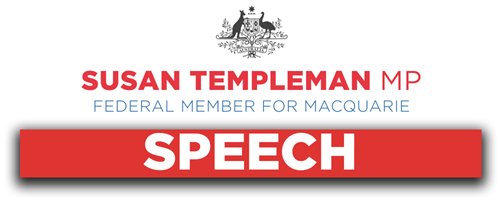
Ms TEMPLEMAN (Macquarie) (14:07): My question is to the Prime Minister. Is the Prime Minister aware that today the New South Wales health minister, Brad Hazzard, confirmed that the gap between the first and second doses of the Pfizer vaccine in Sydney will be spaced out to eight weeks? Mr Hazzard said:
Simply, there is not enough Pfizer in New South Wales … or Victoria—for the people who are now wanting it …
Why didn't the Prime Minister do his job on vaccines?
Mr MORRISON (Cook—Prime Minister and Minister for the Public Service) (14:07): The decision to focus on first doses in New South Wales was a decision taken together, between the Commonwealth government and the New South Wales government, and it was done because of the outbreak that was occurring in south-western Sydney and to ensure that we maximised the use of vaccines in that part of the country, that part of Sydney, to ensure that we lifted the level of resilience and to seek to slow that spread of the virus in those parts of New South Wales. That was a very sensible plan, and we added to that plan. Indeed, the government has provided to New South Wales almost a million additional doses beyond their allocations, both in bring-forwards of Pfizer doses and in new, complete over-the-allocation doses—500,000, specifically—that were made available through the Polish arrangement that the government was able to secure and that I was able to secure with the Polish Prime Minister. That is what our plan was when those issues arose in south-western Sydney—to get the additional doses into New South Wales, supported by the New South Wales government. Those arrangements were done directly between me and the Premier, over many days, to ensure that we could maximise.
That was not done at the expense of other states and territories. The Commonwealth did not divert doses from other states and territories to New South Wales. We maximised the use of the doses we had available and we went outside our borders and got more doses to support New South Wales, which was facing the most difficult part of this crisis that it had seen in the course of the entire pandemic. So we have been supporting New South Wales very heavily as they've worked through this very difficult time. Because we were able to vaccinate, in particular, those who are in residential aged-care facilities, we know that the fatality rate of what we observed during the Victorian wave, when the vaccine wasn't in place, was some 4.2 per cent. That rate has fallen to 0.45 per cent in New South Wales this year because of the work done to protect our most vulnerable people in that state and, indeed, across the country. Eight hundred, or thereabouts, lost their life last year during the second wave in Victoria, and that has fallen by almost 90 per cent with the same amount of cases—indeed, more cases—in New South Wales this time.


